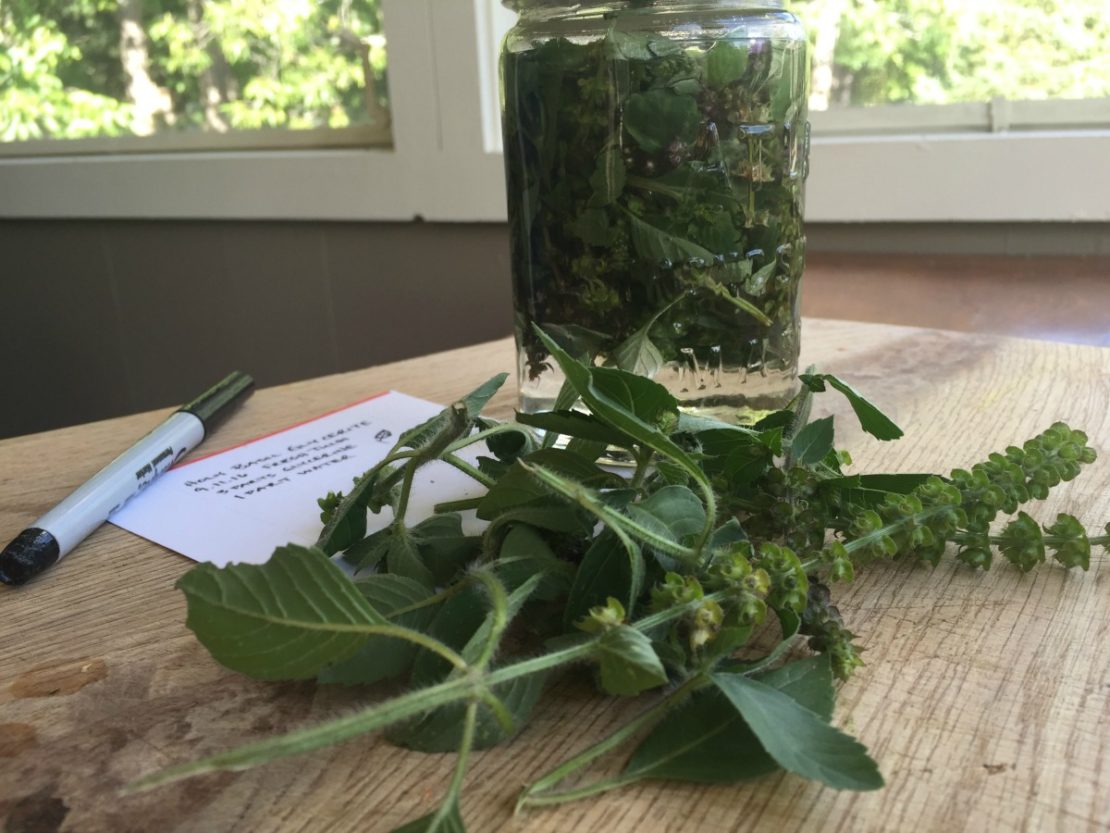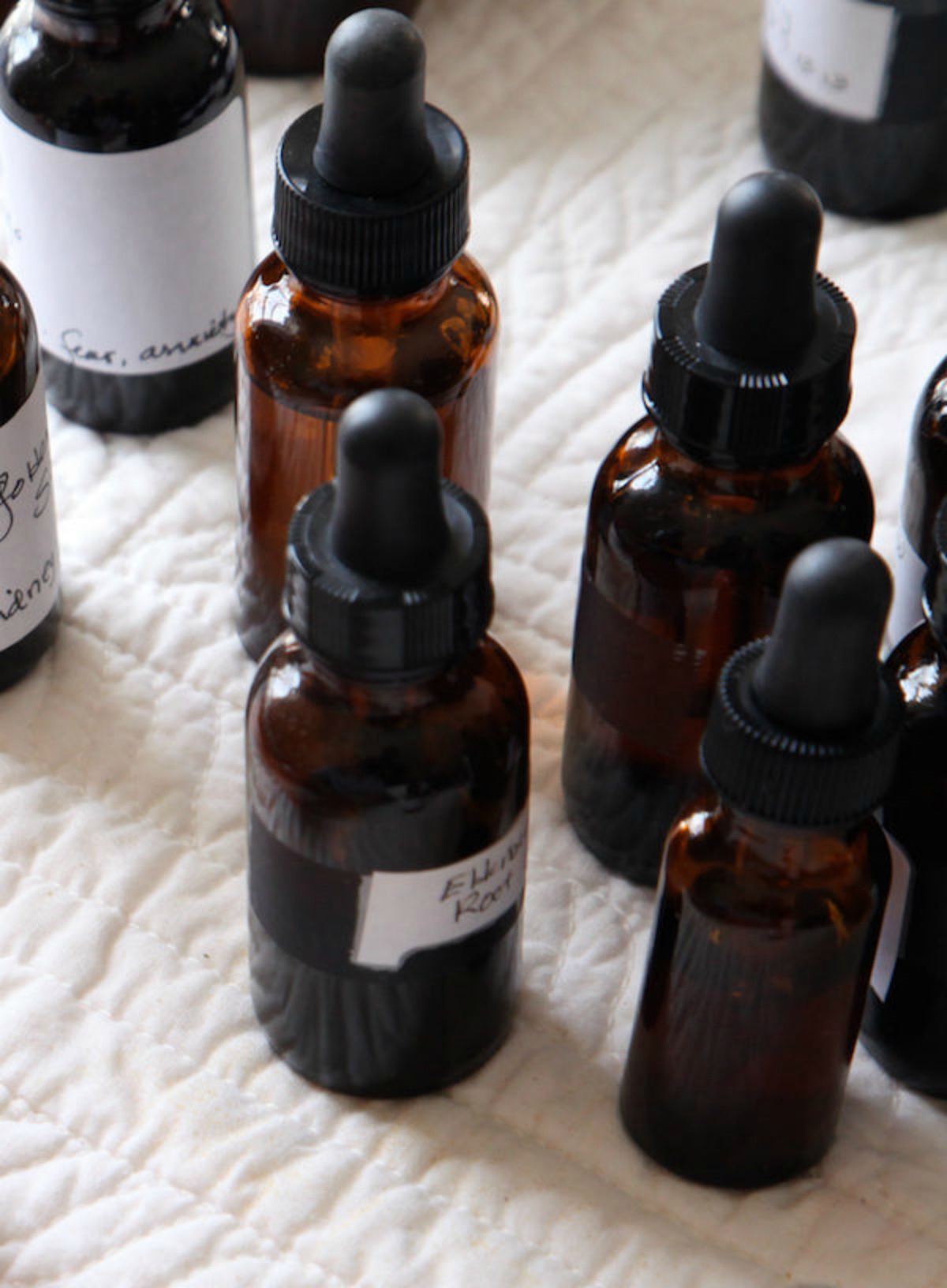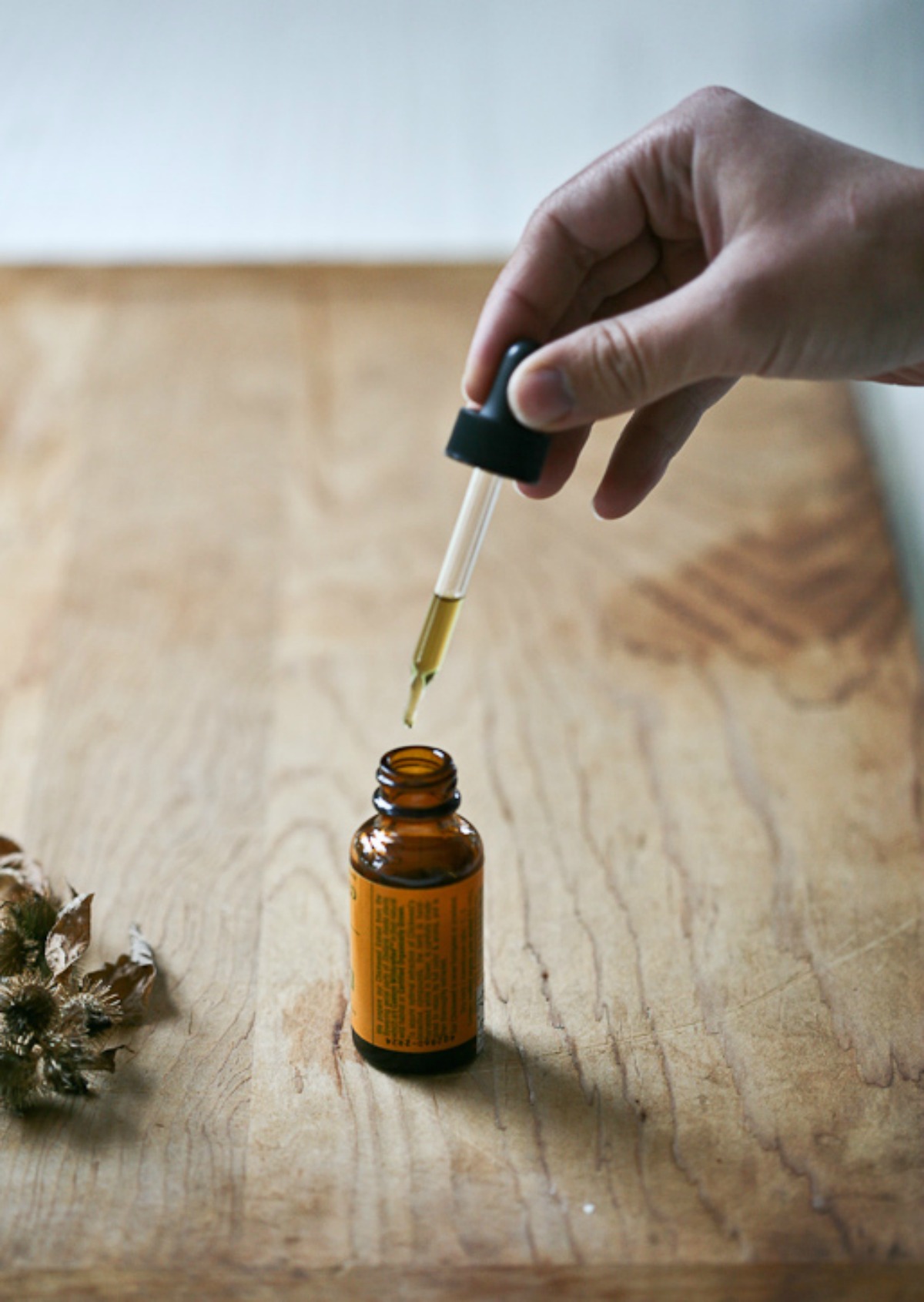
Demystifying Weight-to-Volume Tinctures
Many of us begin our exploration of herbalism by making tinctures using what is often called the Folk Method. And there’s nothing wrong with this method—tinctures made this way can be absolutely effective. They are made and used by the most experienced of practitioners as well as those of us who make tinctures for home use. Today I’m going to explain a different method known as weight-to-volume tinctures.
Whatever our level of experience, it’s commonly understood among herbalists that at its most basic, a tincture is an extract of herbs into alcohol. You get dried or fresh herbs, put them in a canning jar, cover with whiskey, vodka or brandy, let them sit for a while, shake here and there, and, tah-dah!—it’s a tincture!
But what do we understand when we read a scientific study of the efficacy of a 1:5 tincture for a particular ailment? Or how do we know what alcohol to choose for a 1:1 tincture with 95% ETOH (ethyl alcohol)? If we are experimenting with making tinctures for the marketplace, how do we record and track our methods to end up with the best and most effective product possible? Here is where it becomes important to understand what weight-to-volume formulations are, and how to use this understanding for our (and others’) benefit.

Demystifying Weight-to-Volume Tinctures
What IS Weight-to-Volume, Anyway?
This simply refers to the weight of plant materials (or marc) relative to the volume of alcohol (or menstruum) used in making a tincture. Another easy way of thinking about weight-to-volume is in terms of concentration—how much of a plant’s beneficial properties are present in a certain amount of tincture. In the world of herbalism, we generally rely on grams and milliliters (as opposed to dry and liquid ounces) as measurements of volume and weight, but these numbers specifically refer to proportion, regardless of how we’re measuring.
Many herbal books and teachers offer the following weight-to-volume ratios as a basic rule:
- Fresh plant tinctures: 1:2 (95%)
- Dry plant tinctures: 1:5 (50-65%)
In practical terms, this means that when making fresh plant tinctures, each 1 gram of fresh herb is macerated (soaked) in 2 milliliters of almost pure alcohol (e.g., Everclear) for optimal extraction. For tinctures made from dry plant materials, each 1 gram of herb is macerated in 5 milliliters of menstruum with an alcohol content of between 50 and 65% (e.g., strong whiskey, double-proof vodka).
As you read historical texts, pharmacopeias, or the labels on your favorite commercially-available tinctures, you may see other ratios. Very light, “fluffy” herbs such as Calendula may be prepared at a 1:4 or 1:5 ratio, where extremely dense plant material such as milk thistle seed might require a 1:1 ratio. You might see extremely potent herbs tinctured at ratios of 1:10 or even 1:20. Whatever the ratio or alcohol percentage, the idea of weight-to-volume remains the same.

What about alcohol percentages?
In theory, any plant can be made into a tincture, but this preparation might not be the best depending on what you want to extract. Some phytochemicals extract more readily into oil, others into water or glycerine. Other constituents are better extracted in alcohol, and the alcohol percentage of a menstruum may also determine which chemical aspects of the medicine are brought out in tincturing.
Generally, you’ll want to use nearly-pure alcohol to extract resins, balsams, and camphors. Other constituents (like essential oils, alkaloids, glycosides, acrid and bitter constituents, and pigments) do best in an alcohol menstruum, and still other constituents (like sugars, proteins, and mucilage) do just fine with a 50% dilution of alcohol.
Vodka and brandy are commonly used in making tinctures, especially by the folk method. However, these all have a fairly low percentage of alcohol when we consider commercial production standards. Whiskey, rum, scotch and tequila are usually about 40-46% alcohol (cask-strength whisky is higher, up to 60%).
Vodka typically is 35-46% alcohol and gin is 35-40%. Brandy can be between 30 and 65% alcohol. For this reason, you’ll want to pay special attention to an alcohol’s proof when you make tinctures. This is another simple calculation—just divide the proof by 2 in order to calculate alcohol percentage. For example, an 80-proof vodka contains 40% alcohol by volume; an overproof rum might contain up to 50% alcohol.
But what do you do if you want to extract an herb into 70%, 80% or 95% alcohol? This is where dilution comes in handy.
Depending on where you live, you can purchase 190-proof alcohol distilled from corn or other grain, such as Everclear, or 160-proof vodka, such as Devil Springs. If you ask around, you might find people in your own community who distill their own high-proof alcohol (think Prohibition in the 1920s). With such a high alcohol content, these can be diluted to lower percentages to suit your tincturing needs. For example, diluting 190-proof alcohol by a fifth will result in a menstruum that is just over 75% alcohol.
Got it? Let’s do some math!
Remember old-school arithmetic? Well, grab your rosemary or Ginkgo tea and take yourself back to your elementary school days because it’s time to do some calculating!
You are taking 10 milliliters per day of a 1:5 tincture of (dried) yarrow. How many grams of yarrow are you taking in your daily use?
(answer: 2 grams)
A recent study reports that a particular herb is hepatotoxic in amounts greater than 12 grams per day, but you’d like to make a tincture of it to take in smaller amounts. Which of these would not be safe to take given the study’s findings?
A. 5 mL of a 1:1 tincture, three times daily
B. 5 mL of a 1:2 tincture, twice daily
C. 10 mL of a 1:5, once in the morning
(answer: A)
You want to make a 1:5 (70%) tincture of dried crampbark, but only have Everclear to work with. If you want to make a half-liter of tincture (and for this scenario we’ll just imagine that we have a 100% yield), how much Everclear will you need? How much water?
(answers: 350mL, 150mL)
See? It’s not that hard at all.
Hopefully, this helps to demystify those little numbers on the back of your tincture bottles (or in the pages of your favorite herbal) and also gives you some guidance in creating your own tinctures that are effective.
The next time you prepare tinctures, try taking the time to carefully weigh and measure your herbs and menstruum—and keep a record of it! If you find that a tincture has the effect you were hoping for, this is a formulation to keep. If it is ineffective (or too strong), having a record can be really helpful in figuring out what to do next time.








